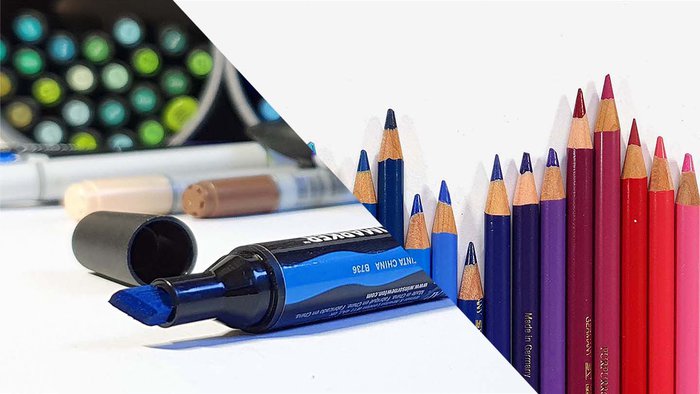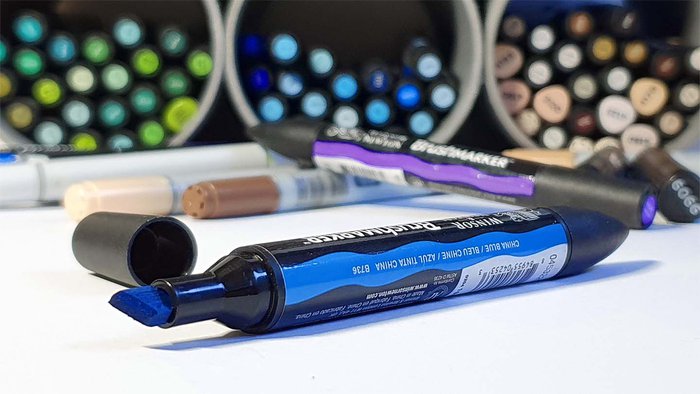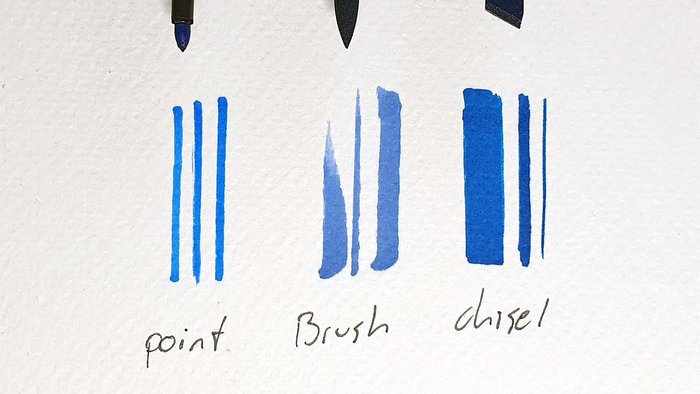Alcohol Markers vs. Colored Pencils | Which One Should You Use?

In the world of art and design, the choice of medium is as crucial as the subject matter. Two popular contenders, alcohol markers and colored pencils, offer distinct experiences and outcomes for artists.
Alcohol markers are celebrated for their vibrant colors and seamless blending, while colored pencils are lauded for their precision and subtle gradations.
Whether you're a budding artist deciding on your first set of tools or a seasoned professional exploring new avenues, this guide will help you understand the strengths and limitations of alcohol markers and colored pencils, guiding you towards making an informed choice for your artistic endeavors.
Understanding Alcohol Markers

Alcohol Markers: An Overview Alcohol markers, a favorite among illustrators and graphic designers, stand out for their unique properties. These markers use a dye suspended in alcohol, allowing for quick drying and minimal smudging. Their fluid nature makes them ideal for covering large areas with consistent color and creating smooth blends.
Types of Alcohol Markers
- Brush Tip Markers: Known for their flexibility, brush tips offer a paintbrush-like experience, perfect for detailed work and broad strokes.
- Chisel Tip Markers: These are excellent for filling large areas and creating bold lines. Their angled tip allows for both broad and narrow strokes.

Pros of Using Alcohol Markers
- Vibrant Colors: The alcohol-based ink provides intense, saturated colors that pop on paper.
- Superior Blending: The ink's ability to blend seamlessly makes it possible to create gradients and shadows effortlessly.
- Fast Drying: Alcohol ink dries quickly, reducing the chances of smudging and allowing for rapid layering.
- Opacity and Layering: These markers can produce varying levels of opacity, allowing artists to build color depth and complexity.
Cons of Using Alcohol Markers
- Higher Cost: Alcohol markers are generally more expensive than other coloring mediums, which can be a consideration for budget-conscious artists.
- Bleed-through: The ink tends to bleed through paper, requiring the use of thick, marker-specific paper.
- Limited Lifespan and Refilling Options: While some high-end markers offer refillable options, many alcohol markers have a limited lifespan and can run out quickly, especially with frequent use.
Link to article how to use am
Exploring Colored Pencils

Colored Pencils: A Closer Look Colored pencils are a staple in the artist's toolkit, known for their versatility and accessibility. These pencils use a colored pigment bound with wax or oil, allowing for a range of artistic expressions. They are favored for their control and ability to produce fine details, making them ideal for intricate designs and realistic shading.
Types of Colored Pencils
- Wax-Based Pencils: These are the most common type, known for their smooth application and easy blending. They can build up a waxy bloom over time.
- Oil-Based Pencils: Offering a harder point and more durable lead, oil-based pencils are great for fine details and resist wax bloom.
Link to article
Pros of Using Colored Pencils
- Precision and Control: The fine point of colored pencils allows for intricate detail and exact lines, essential for detailed illustrations.
- Wide Range of Effects: Artists can achieve a variety of textures and shading techniques, from light washes to deep, rich tones.
- Affordability and Durability: Generally more affordable and long-lasting, colored pencils don't dry out and can be used for years.
Cons of Using Colored Pencils
- Time-Consuming for Large Areas: Filling in larger spaces can be labor-intensive and time-consuming compared to other mediums.
- Limited Blending: While blending is possible, it is more challenging than with alcohol markers, requiring more skill to achieve smooth gradients.
- Regular Sharpening Required: To maintain precision, colored pencils need to be regularly sharpened, which can be cumbersome during long drawing sessions.
Comparison of Techniques and Effects

Blending Capabilities: Alcohol Markers vs. Colored Pencils
- Alcohol Markers: Known for their remarkable blending properties, alcohol markers allow for seamless transitions between colors, ideal for creating gradients and realistic shadows.
- Colored Pencils: Blending with colored pencils requires more technique, such as layering colors or using a blending pencil. The result is subtler but offers more control over fine details.
Layering and Texture Creation
- Alcohol Markers: They excel in layering colors to achieve depth and vibrancy. However, their texture capabilities are limited compared to pencils.
- Colored Pencils: These tools shine in creating textures, from smooth skin tones to rough surfaces. Layering different colors adds depth and richness to the artwork.
Suitability for Different Artistic Styles
- Realism: Colored pencils are often preferred for highly detailed, realistic artwork due to their precision.
- Cartoon and Concept Art: Alcohol markers are a popular choice for bold, dynamic illustrations, like in comic books or concept sketches.
- Mixed Media: Both mediums can be used in combination. For example, alcohol markers for base layers and colored pencils for detailing and texturing.
Choosing the Right Medium for Your Project
- The choice depends on the desired outcome:
- For vibrant, fluid artworks with less emphasis on minute details, alcohol markers are ideal.
- For detailed, textured pieces requiring fine control, colored pencils are preferable.
- Experimenting with both mediums can also provide unique results and expand an artist's skill set.
Practical Considerations
Cost Analysis: Long-Term Investment vs. Initial Costs
- Alcohol Markers: The initial investment is higher, especially for professional-grade markers. However, refillable options can reduce long-term costs.
- Colored Pencils: Generally more affordable to start with. Quality varies, but even higher-end pencils tend to be less expensive than alcohol markers. They last longer, making them cost-effective over time.
Durability and Archival Quality
- Alcohol Markers: While the colors are vibrant, they may fade over time, especially if exposed to sunlight. Using archival-quality markers and paper can mitigate this.
- Colored Pencils: They have excellent archival qualities, especially oil-based pencils. The pigment, when applied to high-quality paper, can remain stable and vibrant for many years.
Environmental Considerations and Safety Tips
- Alcohol Markers: They contain alcohol and dyes, which can be harmful if inhaled in large quantities. Work in a well-ventilated area and consider using markers with non-toxic labels.
- Colored Pencils: Generally safer and more environmentally friendly. However, be mindful of the wood source for pencils and opt for brands that use sustainably sourced wood.
Storage and Maintenance
- Alcohol Markers: They should be stored horizontally to keep the ink flowing evenly. Regularly check for dried-out markers and replace or refill as needed.
- Colored Pencils: Store them in a way that prevents breaking (a sturdy case is ideal). Regular sharpening is needed, and having a good quality sharpener is essential.
Conclusion
In the artistic journey, the choice between alcohol markers and colored pencils is not just about color and technique; it's also a decision influenced by practical factors like cost, durability, and personal style.
While alcohol markers offer vibrant colors and fluid blending, they come with a higher initial cost and specific maintenance needs.
On the other hand, colored pencils provide precision and a wide range of textural effects, along with being cost-effective and environmentally friendly.
Ultimately, the best choice depends on the artist's individual needs, style, and the specific demands of their project. Experimentation with both can open new avenues of creativity, helping artists discover unique ways to express their visions.


Be the first to comment!
Comments
There are no comments yet.